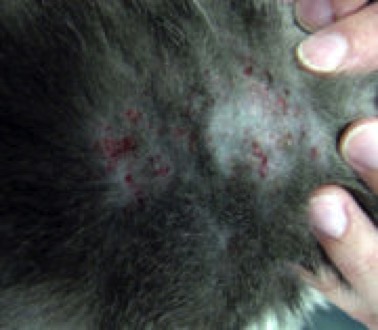Itchy area around Cat Eyes and Under Chin
by Caroline Jobe
(BC Canada)
Reader Question: Are allergies to blame for a cat that is rubbing the eyes or itch?
My cat rubs and scratches the corners of her eyes and the skin looks inflamed around the outer edges of the whole eye (both eyes), also itchy under chin. I had another cat that had the same problem and I was told it was because of an allergy to fleas. He was given cortisone every time they flared up which was about twice a year for years.
Finally he developed feline diabetes which was a side effect I was told by the vet of the cortisone shots. He finally had kidney failure and had to be euthanized. I have resisted getting shots for this cat (they are both white cats by the way) because I didn't want her to get diabetes. i am hoping there is a topical creme for this condition.
If I do not hear from you I will take her to the vet.
Thanks
Veterinarian Suggestion:
Hi Caroline,
Allergies could be to blame for your cat’s symptoms but so could a whole range of other conditions. It sounds as if your cat needs a dermatological work-up to determine what is going on.
My first step in cases like these is to run a few simple diagnostic tests, usually a skin scraping to look for mange mites, cytology to diagnose skin infections and determine whether yeast
If these initial tests don’t provide the answer and the cat isn’t doing significantly better on whatever treatment I’ve prescribed, the next step is usually to investigate the possibility of allergies. Cats can be allergic to environmental triggers (pollen, mold, etc.) or to ingredients in their food. Diagnosing a food allergy requires a strict food trial lasting at least 6-8 weeks during which the cat eats nothing but a prescription diet that contains novel protein and carbohydrate sources or proteins that have been hydrolyzed. Determining what environmental triggers a cat might be responding to ideally is done through intradermal skin testing, although blood testing can be considered for some individuals.
If allergies seem unlikely or test results are all normal, I often then recommend skin biopsies.
Even if allergies are the eventual diagnosis, cortisone injections are not your only (or best) option for treatment. If your primary care veterinarian is not comfortable with potentially complicated skin cases, make an appointment with a veterinary dermatologist.
Best of luck,
Jennifer Coates, DVM
Join in and write your own page! It's easy to do. How? Simply click here to return to Cat Skin.

